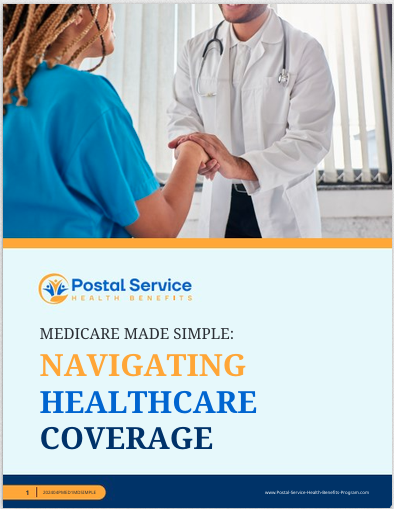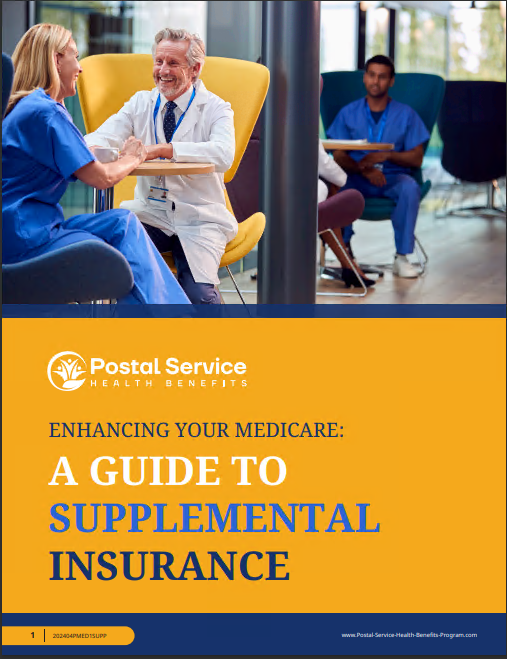Key Takeaways
-
Even after you believe you have met your deductible under a PSHB plan, hidden exclusions and timing rules can leave you paying out-of-pocket.
-
Understanding the differences between in-network, out-of-network, and prescription deductibles is critical to knowing when your cost-sharing truly ends.
What You Think Counts Toward Your Deductible May Not
When you pay out-of-pocket for medical services early in the year, it’s natural to assume that every dollar brings you closer to your deductible limit. But under Postal Service Health Benefits (PSHB) plans in 2025, that assumption can be misleading.
PSHB deductibles—especially for high-deductible or multi-tiered plans—often exclude certain charges from being counted toward your annual limit. These include:
-
Out-of-network services, even when medically necessary
-
Charges above the plan’s allowed amount
-
Copayments (in some plan designs)
-
Prescription drug costs, unless they fall under a separate pharmacy deductible
So if you received treatment from a specialist outside your plan’s network or paid out-of-pocket at a pharmacy that’s not part of the plan’s network, those costs likely don’t count toward meeting your deductible—even if they came out of your pocket.
In-Network vs. Out-of-Network: A Hidden Deductible Divider
Most PSHB plans have separate deductibles for in-network and out-of-network care. As of 2025, in-network deductibles generally range between $350 and $500 for Self Only coverage, while out-of-network deductibles can exceed $2,000.
What many enrollees miss is that these deductibles don’t combine. If you meet your $500 in-network deductible and then receive an out-of-network service, your deductible for that provider resets. That means:
-
The in-network deductible you met offers no financial protection outside the network.
-
Out-of-network claims may not be reimbursed at all until you meet a much higher threshold.
-
Balance billing applies more frequently with out-of-network providers, increasing your total cost.
This distinction can cause serious confusion, especially if your provider is unknowingly out-of-network—or you assume all care at a certain facility is in-network.
Embedded Deductibles vs. Family Deductibles
In 2025, PSHB family plans often have what’s called an “embedded deductible.” This means that individual family members must meet their own deductible before the plan covers services for them. Alternatively, the total family deductible can be met collectively.
For example:
-
A Self Plus One plan with a $1,000 family deductible may require each person to meet a $500 individual deductible.
-
However, if one family member racks up $1,000 alone, they may still need to meet the individual limit before full benefits apply to them.
This structure can be hard to track unless you closely monitor how much each person has contributed. Some plans do not provide clear or timely statements, leaving you guessing whether you’ve crossed that invisible threshold.
Prescription Drug Deductibles: Separate and Often Overlooked
One of the most commonly misunderstood features in PSHB plans is the prescription drug deductible. Many enrollees assume that drug spending automatically counts toward the medical deductible. In most cases, it does not.
-
A typical PSHB plan in 2025 might have a $350 medical deductible and a $150 pharmacy deductible.
-
These deductibles operate independently, meaning you must meet each separately before coverage kicks in fully.
-
Only costs spent within the plan’s preferred pharmacy network are counted.
This can lead to an unpleasant surprise: after months of filling prescriptions, you might discover your deductible progress bar hasn’t moved—because those costs were allocated to the pharmacy deductible instead of the medical one.
Timing Matters: What the Calendar Year Rule Means for You
All PSHB deductibles reset every January 1. If you have a costly procedure or chronic condition and most of your care happens late in the year, the deductible will start over at the beginning of the next year—even if you barely had time to benefit from hitting it.
In practice:
-
If you meet your deductible on December 28, your cost-sharing resets just four days later.
-
Some services, especially those that span over New Year’s (like inpatient hospital stays), may split costs across two deductible periods.
Understanding how your plan handles claims that cross from one year into the next can help you better plan for procedures—and avoid unexpected bills in January.
Provider Billing Delays Can Obscure Deductible Tracking
Even if you think you’ve met your deductible based on services you’ve received, delays in provider billing and claim processing can distort the timing. PSHB carriers often take several weeks to process a claim and apply it to your deductible.
This delay means:
-
You may think you’ve met your deductible, but the insurer hasn’t applied your payment yet.
-
In the meantime, new services will still be subject to cost-sharing.
-
Online portals may show outdated deductible status until claims are fully adjudicated.
Always track Explanation of Benefits (EOBs) and keep records of large payments. If necessary, call your plan to confirm whether a particular charge was counted toward your deductible.
Preventive Services May Be Covered Without Deductible—but with Caveats
In 2025, PSHB plans continue to cover many preventive services without requiring you to meet your deductible first. This includes:
-
Annual check-ups
-
Certain screenings (like mammograms or colonoscopies)
-
Vaccinations (such as flu and COVID-19)
However, the fine print matters:
-
If a preventive service leads to a diagnostic procedure, the follow-up may be subject to the deductible.
-
If the service is performed out-of-network, it may not be covered fully—or at all.
-
If your provider codes the visit as diagnostic rather than preventive, you could face a full bill.
That means a routine wellness exam might unexpectedly cost you hundreds if not documented precisely.
Cost-Sharing After Meeting the Deductible
Meeting the deductible doesn’t mean everything is free afterward. PSHB plans generally shift into a coinsurance phase once the deductible is met. That means you still pay a percentage of covered costs.
-
Coinsurance ranges from 10% to 30% in-network.
-
Out-of-network coinsurance may be 40% or higher.
You only stop paying out-of-pocket when you reach your plan’s out-of-pocket maximum—which can be as high as $7,500 for Self Only coverage and $15,000 for Self Plus One or Self and Family plans in 2025.
It’s crucial to distinguish between “meeting your deductible” and “reaching your out-of-pocket max.” One simply begins cost-sharing; the other ends it.
How to Know Where You Stand
You can avoid surprises by actively monitoring your deductible status using the following strategies:
-
Log in to your plan’s portal regularly to track updates.
-
Review each Explanation of Benefits for deductible application.
-
Confirm whether services are in-network before scheduling.
-
Contact your carrier’s support line for clarification on claims.
Some PSHB plans offer mobile apps or dashboards that break down deductible progress by individual and by category (e.g., medical vs. pharmacy). Use these tools if they’re available.
Why This Matters More in 2025
The PSHB transition has brought new plans, updated rules, and more complex cost-sharing structures. This means 2025 enrollees—especially retirees managing fixed budgets—must be more aware than ever about how deductibles work.
-
Higher deductibles in high-deductible plans are increasingly common.
-
Confusion about network tiers and cost-sharing categories leads to overspending.
-
Prescription drug costs are more tightly tracked, with a $2,000 annual out-of-pocket cap applying under Medicare Part D integration.
Without close tracking, you could meet a deductible and still pay hundreds more than expected—simply because the cost was attributed to the wrong category.
Where You Can Get Clear Help and Answers
If you’re feeling unsure about whether you’ve met your deductible—or how your PSHB plan applies various charges—it’s not your fault. The system is fragmented, and plan documents can be vague.
This is where a professional conversation makes a difference. A licensed agent listed on this website can walk you through the plan’s actual cost-sharing structure, explain what counts, and help you optimize your coverage.
You shouldn’t have to second-guess your deductible status. Get accurate, tailored information now—before another confusing bill shows up.







